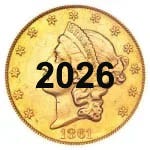Rare 1992-D Error Cent Found in Tray
Collector discovers a circulation strike Lincoln cent in ‘leave a penny, take a penny’ container at gas station.
Michigan collector and cherry picker John Anderson reports finding a 1992-D Close AM circulation strike Lincoln cent that could be worth thousands of dollars! Amazingly, he found it in a “leave a penny, take a penny” container in a local gas station that he’s been searching for four years.
This demonstrates that there are still valuable coins out there to be found in circulation. The variety, first identified in 2001, is considered rare, with a total population of about 85 pieces between the three grading services, PCGS, NGC and ANACS.
There were none reported for ICG or SEGS. The population of certified examples may be lower than noted due to crossovers from one service to another.
Anderson showed me the piece at a recent coin show just after I was finished packing to leave, but CONECA’s Vice President James Motley and I had just enough time to examine and verify that the coin was genuine and properly attributed by Anderson.
Anderson said he has been collecting for 11 years. His coin is a very pleasing red-brown, but because the show was closing and I was rushed, I admittedly did not take time to inspect it carefully for grade. I can say that his photographs sent later suggests it could grade around MS-64 RB. In the meantime, he sent it to PCGS, but I have not learned how it graded out at the time of this writing.
While the prices of this variety have generally declined some for lower grades since the coin was first discovered due to an increased supply, it is still a coin that normally fetches four-figure prices and is getting hammered down at top prices for MS-65 RD coins.
The firm Heritage Auctions shows sale results. The coin ranges from $990 for an NGC AU-55 Brown sold last April to $8,225 for a PCGS MS-65 Red that sold in January of last year for $8,225. A PCGS MS-65 RD was sold by Heritage last April for $7,200, showing that it is still maintaining lofty prices in top grades.
Stack’s Bowers Galleries has auctioned off several but none in recent years. The most recent one was in 2013 for a PCGS MS-64 Red that sold for $3,818.75.
I have not included a counting machine damaged example in the numbers above, but one certified as such by PCGS with “UNC Details” sold for $552, which is an awfully high price for a damaged coin. The above results include the buyer’s premium.
All years of circulation and proof Lincoln Memorial cents dated prior to 1993 (save for the few test pieces from 1992) carry a reverse design style that exhibits the AM of AMERICA spaced wide apart to a greater or lesser degree depending on the date.
Often ignored but important is that the Close AM style on the reverse for 1992 displays Frank Gasparro’s designer initials, FG, further from the Memorial Building than the Wide AM design.
The year 1993 is the only year that the Close AM style was intended for use on both circulation and proof cents. From that point forward, the new Close AM style dies were reserved for dies intended to strike circulation coins, while the older Wide AM style was maintained for the production of proof cents, though a few mix-ups did occur for several dates.
John A. Wexler first described these design style variations in a Jan. 22, 2001, story where he announced that a 2000-dated business strike cent had been discovered mated with one of the Wide AM reverse dies intended for proof cent production. It had inadvertently been processed as a business strike die and got used as such. Soon afterward, folks began to search all Lincoln cents dated from 1994 on, and in short order, specimens dated 1998 and 1999 were found with proof-style reverses. Still later, 1998-S and 1999-S proof cents were found struck with the Close AM business strike-style reverses, which are very scarce to rare.
By about mid-2001, all three of the post-1994 business strike dates currently known with a Wide AM reverse were identified. However, collector Colin Kusch decided to look back wondering if the Close AM dies believed to have been introduced in 1993 might have actually seen a small run at the end of 1992. By early December 2001, he had cornered his quarry by discovering what would be the second rarest of the AM varieties to date, the infamous 1992-D with a Close AM reverse.
I reported this find in September 2002. A Philadelphia-minted 1992 Lincoln cent struck with a reverse die bearing the “Close AM” of AMERICA design style was reported by Parker Ogilvie of Massachusetts in 2006 and is the rarest of all the proof- and business strike-style varieties. I have had the pleasure to be the first to break the stories on the 1992, 1992-D, proof 1998-S, 1999 and proof 1999-S AM varieties over the years as they were discovered.
For those searching for (or, more importantly, those buying) these varieties, it should be noted that both 1995 and 1996 Wide AMs have been reported over the years, but both coins turned out to be alterations made by mating the reverse of an older coin bearing a Wide AM with the obverse of newer date coin by taking two coins and lathing them in a manner that one coin fits within the other and is glued together in the same way that manufacturers make double-headed or double-tailed flipping coins for sale as novelties.
Additionally, PCGS identified a group of five 1992 Close AM alterations made in a different but somewhat similar fashion from two different coins. Both types of alterations can be seen under magnification within the inside rim of one side of the coin or the other. The 1995 and 1996 were probably “errors” made within a novelty concern that makes double-headed novelty coins that simply dumped them into circulation when they saw the mistake.
The 1992 fakes were clearly made to defraud, with a number sold to one dealer who sold a small number of them before the alteration was caught by PCGS. It should also be noted that the latest edition of the Cherrypickers’ Guide To Rare Die Varieties, 6th Edition, Volume 1, lists 1988 Wide AM cents as a desirable variety. This was a mistake in the book, as all 1988 cents for the year from all mints bear a Wide AM.
There are trivial variations on the 1988 cent, but they involve the font style of Frank Gasparro’s designer initials on the reverse. More can be seen about them here.
It is of interest to note that last year a collector found a 1992-D Close AM identified by John Wexler as coming from a second reverse die. That story was reported by me last year in Numismatic News and can be found here: http://www.numismaticnews.net/article/second-92-d-close-die-pair-found. Wexler’s findings fall in line with my theory that the 1992 and 1992-D Close AM cents were most probably deliberately struck at both mints to test the compatibility of the dies before thousands more dies were produced. Very small changes in a die’s design may prove to be undesirable, resulting in problems such as increased die cracking, weakness of strike, or reduced die life in general. These tests probably occurred sometime near the end of 1992 with the intention of the new design being introduced for use in 1993 if they worked out.
The original 1992-D Close AM discovery coin found by Colin Kusch in December of 2001 was mated with a reverse die that was in mid-die state, indicating that hundreds of thousands of coins had been struck prior to that coin. This was a strong indicator that is reaffirmed by the passage of time that the Mint made a concerted effort to destroy all the test pieces and that only a few of the millions of coins that were probably struck actually escaped the Mint into circulation.
Wexler’s findings suggest that the presses, which during those years used a quad set-up of four die pairs per press, were probably fully loaded with Close AM dies. A study of more coins may reveal that this die or others saw full die runs and that other die pairings exist.
The bottom line is that not everything of significant value that could be in circulation has been found by pocket change or roll searchers.
In just the last year, I reported upon a 1982-D Small Date Lincoln cent struck on a solid copper alloy planchet weighing 3.1 grams that to date is still unique and has since fetched $18,800 in a Stack’s Bowers auction last summer; a second die pairing of a 1992-D Close AM (as noted above) that is undoubtedly worth in the four figures; and I have also made mention in those articles of other planchet or die varieties of modern vintage that have been found and sold for thousands of dollars in the recent past.
If you haven’t started looking at your pocket change yet, maybe now is the time to start. I suggest buying a copy of my book Strike It Rich With Pocket Change, which I wrote with Dr. Brian Allen. (It is available from www.shopnumismaster.com).
You can also run a search using my name as the keyword to read many of my past articles in Numismatic News that almost always focus on recent finds that can help you find your pot of gold at the end of the rainbow!
An error image gallery can be found at http://koinpro.tripod.com.
This article was originally printed in Numismatic News. >> Subscribe today.
More Collecting Resources
Error coins can bring big money. Learn to detect them and how to cash in on them with Strike It Rich With Pocket Change.









